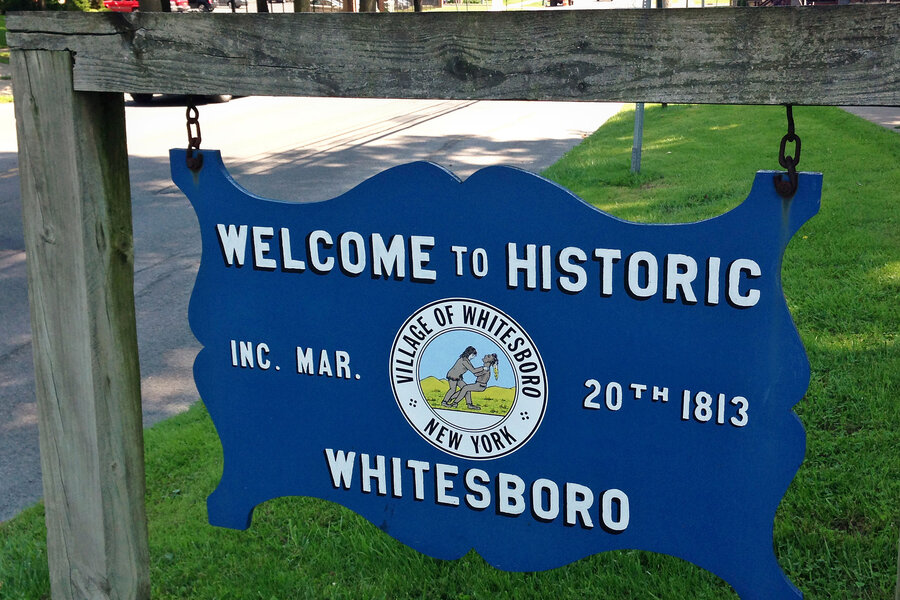Whitesboro drops 'racist' seal: Sign of the times for Native Americans?
Loading...
A New York village has responded to national news controversy by redesigning its seal, after a vigorous debate over whether it represented racism or a nod to the area's history.
The Whitesboro, N.Y., emblem features a wrestling match between founder Hugh White and an Oneida Indian. Mr. White won, gaining the respect of the local tribe, but critics have said the seal depicts an inappropriate racist viewpoint, the Associated Press reported.
"The city of Whitesboro, NY proudly displays what looks like a European settler choking, or violently handling, a Native American man," wrote Ben Miller, a Native American with heritage in several tribes, wrote in a petition to change the seal last summer. "But to me, this seal is anything but respectful to my people and my heritage."
The logo has been debated for years, and one Native American organization sued Whitesboro in the 1970s. That the change is coming now could be emblematic of a broader shift in how Americans consider native people.
"This is but one of many important examples of communities taking welcome steps to be inclusive and promote our region's commitment to civility," the Oneida Nation CEO Ray Halbritter said in a statement after the change, the AP reported.
The most nationally visible debate has occurred in the sports arena, as Native American groups, President Obama, and even Adidas have encouraged sports teams to drop Native American names or mascots, including "Warriors," "Braves," and especially "Redskins."
Notably, the Washington Redskins NFL team owner Daniel Snyder told USA Today the "Redskins" name was staying, even as government agencies, major news publications, and others boycotted the name.
"We'll never change the name," he said. "It's that simple. NEVER — you can use caps."
Conversely, the University of Utah signed a five-year agreement in 2014 to continue using the nickname "Utes," the local tribe for which the state of Utah is named, the Deseret News reported. This case showed deference to the local tribe, however, because although Native American groups outside Utah complained, the Ute Tribe has said the nickname promotes awareness of their heritage.
The trend toward altering historical symbols, statues, and buildings as a tool for inclusion has been pushed by black Americans as well, including the removal of monuments to white Americans who espoused the race-motivated sentiments of their day.
One example is the University of Maryland, which changed a stadium named after Harry Clifton “Curley” Byrd, the University's president from 1936 to 1954, to "Maryland Stadium." The contention was that Byrd was a strict segregationist, and the university wanted to distance itself from his views, The Christian Science Monitor reported.
"History is not about the past," wrote university President Wallace Loh in suggesting the change. "It concerns today’s debates about the past."
African Americans have arguably made more progress than indigenous people in scrubbing the American landscape of hateful or racist symbols and celebrating their heritage. For example, Martin Luther King Jr. Day and Black History Month in February are longstanding holidays that have honored black Americans for years, yet native Americans are only recently finding similar holiday recognition. The latest effort is to change the existing Columbus Day holiday to Indigenous Peoples Day, reported The Christian Science Monitor's Molly Jackson:
South Dakota and Berkeley, Calif., were among the first to pay attention, choosing to use the second Monday in October to honor the New World’s first inhabitants instead of its 15th century newcomers. . . .Further protests seemed to fall on deaf ears, until a sudden wave of Columbus cancellations in the past two years: 10 more cities have joined the list, from Albuquerque to Seattle to St. Paul. This new wave may represent a broader shift in how Americans view Native American rights, or at least the growing local political influence of indigenous groups.






